Breaking
- MENU

The Civil War in Syria has ravaged the country, took the life of nearly 500,000 people and has forced more than five million Syrians to take refuge in neighbouring countries while another seven million have been internally displaced. The War has been raging since 2011 with the active involvement of several local, regional and international actors. It has affected the neighbourhood and threatens to escalate into a regional conflict. Iraq, Lebanon, Jordan, Turkey and Israel—all bordering countries—have been varyingly affected. Iraq has gradually promised to regain peace and stability after the military defeat of the Islamic State (ISIS). Lebanon and Jordan remain politically and militarily fragile but have not been completely drawn into the Syrian fire. On the other hand, the military and political involvement of Iran has provoked serious regional containment efforts led by Israel and Saudi Arabia. The involvement of the US and Russia has transformed the crisis into a global geopolitical hotspot, reviving the memories of the Cold War.
The war in Syria is more complex than normally understood. At the local level, it was a rebellion against the Bashar al-Assad regime to a large extent led by youth belonging to various ideological inclinations but at the core demanding a more open political system and better economic opportunities. The regime saw this as an externally induced conspiracy to topple it and used the security forces to crackdown on the protestors. By this time Sunni tribes in Dera‘a and Muslim Brotherhood inspired Islamists in Homs had joined the opposition against the regime and its alleged atrocities. They also met the same fate as the protestors in Damascus and Hama. It did not help that countries such as Saudi Arabia, Turkey, Qatar and Jordan became involved in the crisis and extended financial aid and weapons to opposition groups and encouraged them to form organised resistance. Thus, the Free Syrian Army (FSA) was formed in July 2011 but the group soon degenerated into a loose alliance of competing and ideologically opposing factions and could not withstand the onslaught of the Syrian military.
In the meanwhile, transnational Islamist groups including the Muslim Brotherhood supported by Turkey and Qatar, the Salafist militants supported by Saudi Arabia and to some extent, Jordan and terrorist groups such as Al Qaeda and ISIS found a fertile ground to establish bases in Syria. The ISIS was especially successful in breaching the security and take control of territories especially in eastern and south-eastern parts of the country but also a few populated pockets in the north, northwest and southwest. It is on the basis of these advances made in Syria that in June 2014 Abu Bakr al-Baghdadi announced the foundation of global Islamic Caliphate in Mosul. Nonetheless, by this time the Syrian regime finding it difficult to withstand the multiple onslaughts from the opposition militants had reached out to Iran and its proxies in the region. Tehran directly got involved in Syria on behalf of the regime with a strategic calculus of expanding its regional influence and strengthening a regional resistance to the US geopolitical domination in the Middle East. The Iranian Revolutionary Guard Corps (IRGC) not only came to the rescue of the regime, it also brought Hezbollah combatants from Lebanon and formed, trained and armed Shia militia from within Syria and abroad to fight against the rebels and other transnational militants who were all branded as terrorists by the regime.
Turkey, Saudi Arabia, Qatar and Jordan continued to extend financial and military support to various groups. The US, under Barack Obama Administration, was wary of overt involvement in the Syrian Civil War after the disastrous campaign in Libya. When the Obama Administration did not militarily intervene on behalf of the opposition, after the Ghouta chemical attack in August 2013, which was seen as the US going back on the redline it has set for Syria, it caused serious disappointment not only among the rebels but also in Riyadh, Ankara and Tel Aviv. The opposition and their regional benefactors recognised that the US will not overtly get involved in the war in Syria. As the local situation was degenerating into a murderous stalemate, the ISIS and its franchises started to run over parts of Syria and committed inhuman atrocities on the populace resistant to its ideology. It was at this point that the Civil War in Syria transformed into a much larger conflict involving transnational terrorist groups, armed local militants supported by various regional powers, Shia militias supported by Iran, Kurdish Peshmerga fighters, the Syrian regime, Iran, Turkey and the US. Towards mid-2015, the regime had lost control of several major towns and cities and had seen several reverses despite the support received from Iran, Hezbollah and Shia militias. It was fighting on multiple fronts and finding it difficult to sustain a war against various enemies on several fronts and sought the support of Russia.
In September 2015, Moscow decided to get actively involved in the Syrian theatre and started an air campaign to disseminate the ISIS as well as the opposition militants. However, with the ISIS threatening to advance to other regional countries, all actively involved parties including the regime, Shia militias, Hezbollah, Kurdish Peshmerga and the FSA aided by their regional and international benefactors decided to focus on the fight against the ISIS with an objective to defeat it and expand their own territorial control and fight other enemies later. Nonetheless, the active involvement of Russia completely changed the nature of the War from a local and regional conflict to a global quest for geopolitical influence. Russia entered Syria on the back of its advances in the Caucuses. American reluctance to get directly involved provided it with an opportunity to return to the Middle East. While the ISIS was militarily defeated eventually, within a year of its involvement, Moscow was able to change the balance of power in the Syrian Civil War with the regime getting the much needed support and gaining an upper hand. The fall of Aleppo in December 2016 from the hands of the FSA and other militants demonstrated that Russia had succeeded in rescuing the regime.
In 2018, the Syria crisis has reached a new stage. With the defeat of the local opposition militants and the ISIS, Russia, Iran and Turkey have emerged as the leading actors who are trying to stabilise the situation while the US, Saudi Arabia, Jordan and Qatar have been relegated into marginal players. However, the Trump Administration’s two strikes inside Syria (April 2017 and April 2018) to underscore its commitments towards humanitarian intervention and prevent use of chemical weapons on civilians and Israel’s forays into Damascus to counter the growing Iranian military presence has again threatened to escalate the conflict into a regional war. The situation has been exasperated due to the decision of the US to withdraw from the Joint Comprehensive Plan of Action (JCPOA) on 8 May and the immediate reaction of Iran to target Israeli military installation in Golan Heights. Israel responded by sending a barrage of missiles towards Damascus and this has led to increased fears of a regional conflict involving Iran and Israel. Thus, the war in Syria has reached the threshold of engulfing the whole region which will have wider security and geopolitical implications not only for the neighbouring countries but for the whole world.
India’s geopolitical interests in the Middle East and its recent forays in the region makes it vulnerable to a variety of dangers. Firstly, any regional conflict will suddenly lead to rise in oil prices, and India, which imports nearly 60 per cent of its crude oil from the region, will be badly affected. India’s energy security will also be impacted and can lead to serious inflation and chaos in the domestic market. Secondly, the large number of Indian expatriates living in the region will be vulnerable and if the Gulf countries are affected, New Delhi will have to act swiftly to rescue its citizens. Thirdly, India’s trade and commercial investments, both in and from the region, will be badly affected. In this context, what are the options for India? India has so far relied on its time-tested policy of keeping away from a direct involvement in outside conflicts. It has been urging regional actors to practice restraint and use the option of negotiations to resolve problem. However, the regional dynamics is such that the regional actors are not ready to get into negotiations. Given the regional balance of power, it is likely that the local and regional actors will not be interested in escalation of the hot war beyond Syria. But in the unlikely scenario, India’s ability to maintain friendly relations with all regional adversaries namely Saudi Arabia, Iran, Israel and Turkey and its ability to balance its relations between global powers namely the US, Russia and China will be severely tested. India will do well to work with all stakeholders and multinational organisations to prevent the Syrian conflict to become a regional conflict.
Note: The article was originally published in the June 2018 issue of Defence and Security Alert and is reproduced with the permission of the author.
_____________________________________________
As part of its editorial policy, the MEI@ND standardizes spelling and date formats to make the text uniformly accessible and stylistically consistent. The views expressed here are those of the author and do not necessarily reflect the views/positions of the MEI@ND. Editor, MEI@ND: P R Kumaraswamy

Md. Muddassir Quamar is an Associate Fellow in Manohar Parrikar Institute for Defence Studies and Analyses, New Delhi. He holds a Ph.D. in Middle East studies from Jawaharlal Nehru University and his doctoral thesis focused on social dynamics in Saudi Arabia in the context of the tensions between two seemingly non-harmonious trends; Islamization and modernization. He has a broader interest in Gulf societies, political Islam, Middle East geopolitics and India’s relations with the Middle East. He has co-authored two books India’s Saudi Policy: Bridge to the Gulf (Palgrave Macmillan, 2019) and Persian Gulf 2019: India’s Relations with the Region (Palgrave Macmillan, 2020). He is currently working on a manuscript on education reforms in Saudi Arabia. He has co-edited four anthologies, including Changing Security Paradigm in West Asia: Regional and International Responses (Knowledge World, 2020), Political Violence in MENA (Knowledge World, 2020), Islamic Movements in the Middle East: Ideologies, Practices and Political Participation (Knowledge World, 2019) and Contemporary Persian Gulf: Essays in Honour of Gulshan Dietl, Girijesh Pant and Prakash C. Jain (Knowledge World, 2015). His research papers have appeared in leading international journals such as Asian Affairs, Strategic Analysis, India Quarterly, Contemporary Arab Affairs, Digest of Middle East Studies, Journal of Arabian Studies and Journal of South Asian and Middle Eastern Studies. As part of his project in MP-IDSA, Dr. Quamar authored a monograph on Erdogan’s Turkey: Politics, Populism and Democratisation Dilemmas. Since 2018, he has served as the Book Review Editor for Strategic Analysis, the flagship journal of MP-IDSA published in association with Taylor & Francis. In May 2020, he edited an MEI Monograph Middle East Fights Covid-19: A Fact Sheet with contributions from students pursuing Masters in IR in JNU. He regularly contributes Op-Ed articles on developments in the Persian Gulf, Middle East and India’s relations with the region for Indian and international forums. In 2014-15, he was a Visiting Fellow at the King Faisal Center for Research and Islamic Studies, Riyadh. Dr. Quamar has been associated with the Middle East Institute, New Delhi, in various capacities since its foundation and serves as Associate Editor of its flagship journal, the Contemporary Review of the Middle East published by Sage, India.

On January 17, 2022, the United Arab Emirates (UAE) was rocked by two attacks after drone attacks ta.....
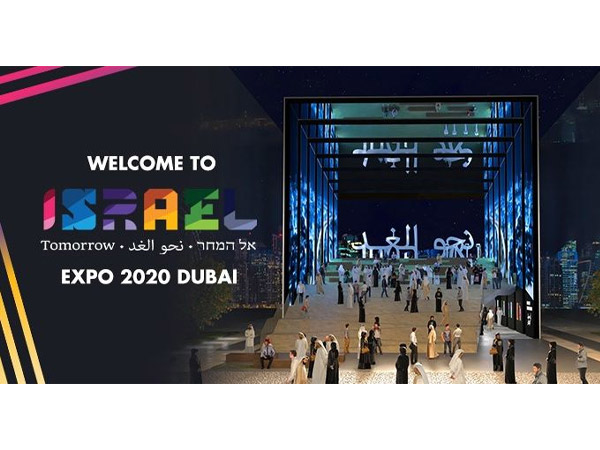
Within a span of just over a year since the announcement of the Abraham Accords, between Israel and .....

External Affairs Minister S. Jaishankar’s visit to Israel signifies the burgeoning Indo-Israel.....

On 28 August 2021, Iraq hosted the first “Baghdad Conference for Cooperation and Partnership&r.....

Recent developments in Afghanistan–the US military withdrawal and return of Taliban– has.....

The Taliban takeover of Afghanistan has wider ramifications for the world. Among the key questions t.....

External Affairs Minister S. Jaishankar attended the swearing-in ceremony of the new Iranian preside.....

The revitalisation of ties with Iran will remain confined to the immediate issue of shared interests.....

Israel and Hamas have engaged in fighting each other since 2006 when Hamas emerged victorious in the.....

Tensions have gripped the Eastern Mediterranean (East Med) for the past few months owning to differe.....
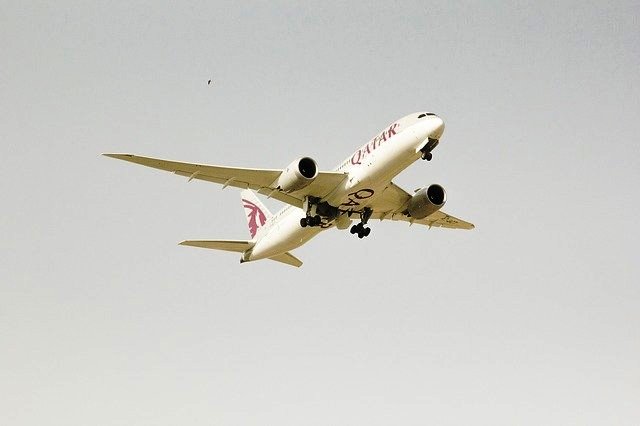
Qatar is an important country in the Gulf with which India has traditionally had strong bilateral ti.....

International geopolitical developments and the growing chances of friction between the global power.....
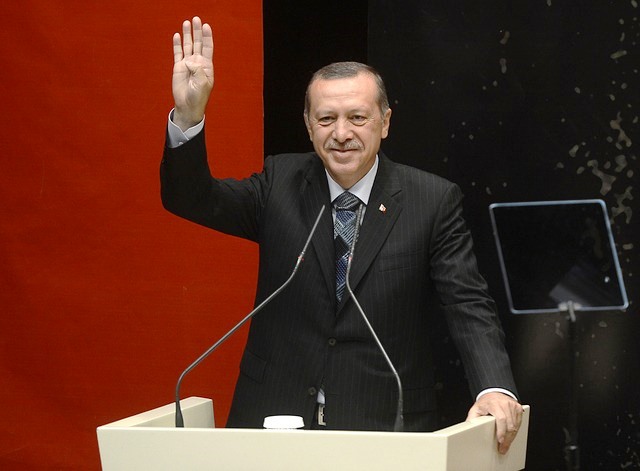
In recent years, Turkey’s foreign policy has attracted scrutiny because of its aggressive post.....

India and the United Arab Emirates share a vision for peace and prosperity. Under the leadership of .....

The coming to power of the AKP is one of the defining moments in the history of modern Turkey. Here .....

Though the news of China and Iran entering into US$400 billion agreement and Iran going ahead with C.....

India’s relationship with the Gulf has witnessed a qualitative transformation since the August.....

The results of country-wide municipal elections in Turkey held on 31 March 2019 threw a few surprise.....

Like other parts of the world, West Asia (or the Middle East) too is hit hard by the spread of COVID.....

Iraq is suffering from internal divisions and external interventions for long. The problems of the p.....

The West Asia is one of the most volatile and conflict-ridden regions in the world today. Given the .....

In the Persian Gulf, the New Year began with a bang. On January 3, the world woke up to the news of .....

Major General Qassem Soleimani, commander of the elite Quds Force of the Iranian Revolutionary Guard.....

For over two months, youth in Iraq are protesting against corruption, unemployment and Iranian and A.....

The historic relations between India and the Gulf countries have undergone a qualitative transformat.....

India and Saudi Arabia enjoy traditional friendly ties. Both are strategic partners and are working .....
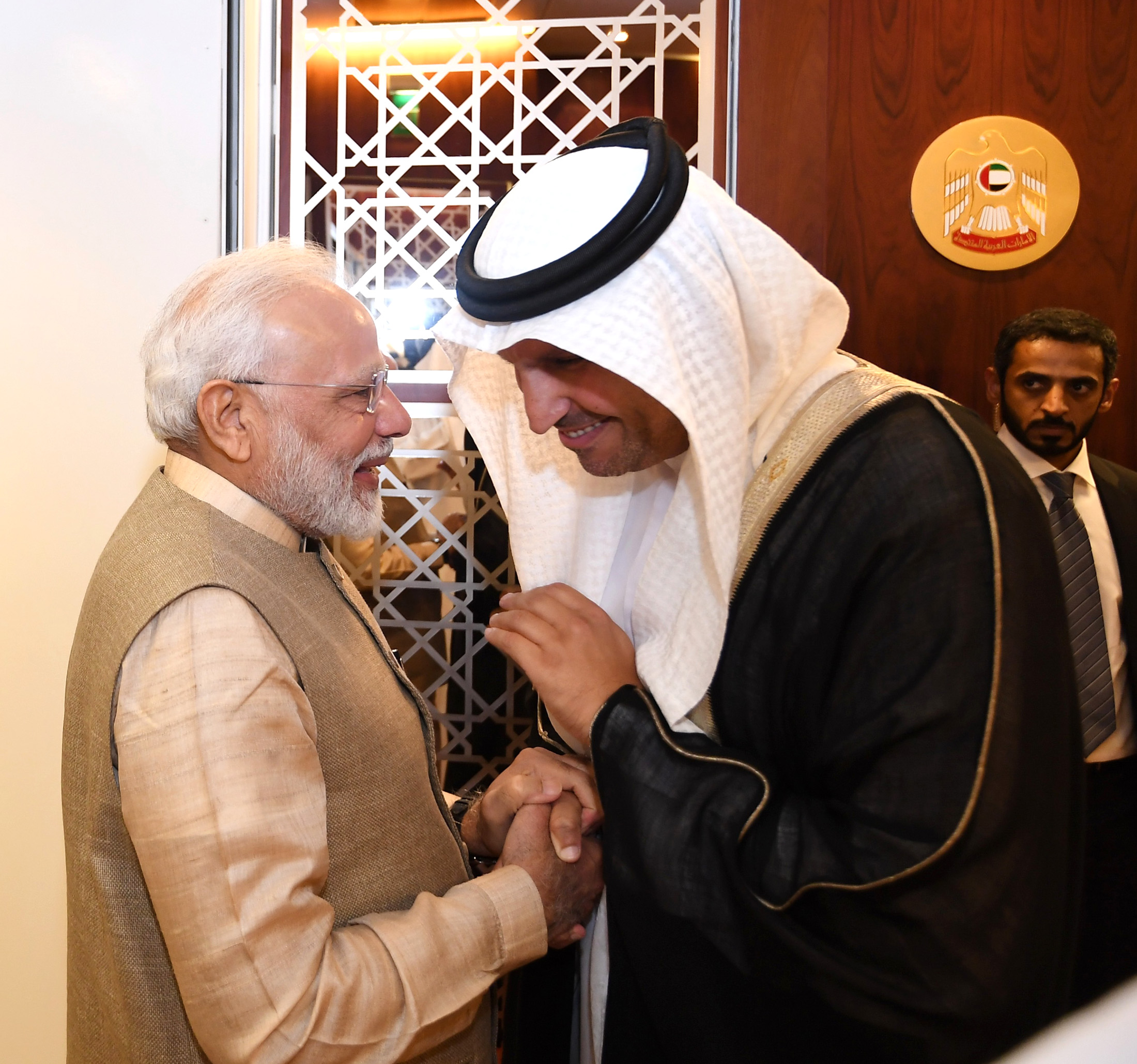
Prime Minister Narendra Modi undertook a visit to the UAE and Bahrain over the weekend. This was his.....

The 16th Ministerial meeting of the Asia Cooperation Dialogue (ACD) took place in Doha this week. Th.....

India’s relationship with the Gulf has witnessed a qualitative transformation since the A.....
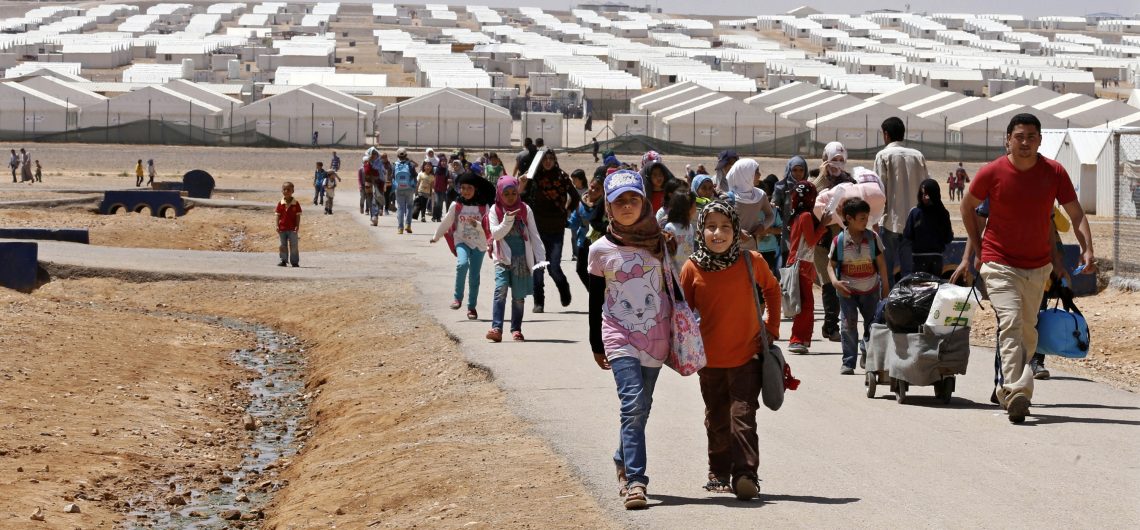
On March 24, 2019, the US-backed Syrian Democratic Forces (SDF) announced the capture of Baghouz, a .....
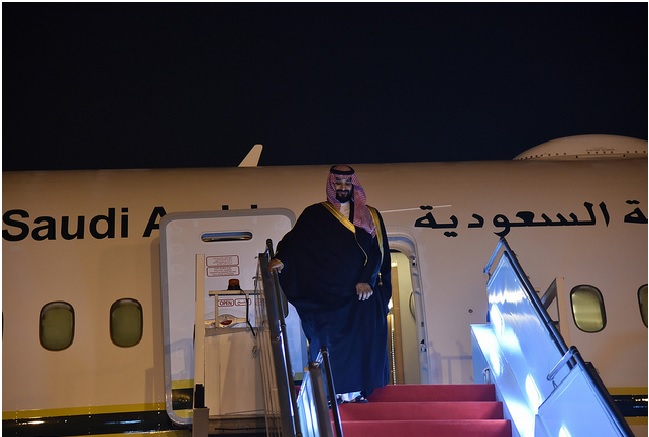
The visit of Saudi Minister of State for Foreign Affairs Adel al-Jubeir to New Delhi; close on the h.....
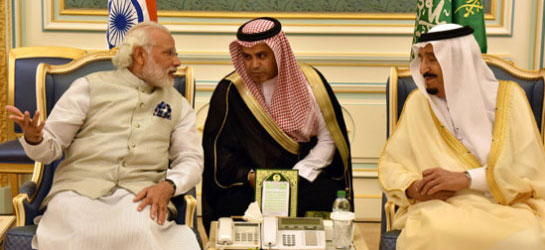
India and Saudi Arabia have increased defence and security cooperation in the fields of combating te.....

Economic and social reforms have emerged as the focus area in Saudi Arabia under the leadership of K.....

The US and Turkey are back on collision course over the Kurdish question in northern Syria. The late.....



Much of what Israel and the Palestinians are experiencing today has befallen them under Netanyahu’s lead.....

Lurking in the background of a Saudi-Moroccan spat over World Cup hosting rights and the Gulf crisis is a more.....

Any protracted conflict can come to an end under certain circumstances that either evolve over a period of tim.....

Amid ever closer cooperation with Saudi Arabia, Israel’s military appears to be adopting the kind of sec.....

Mounting anger and discontent is simmering across the Arab world much like it did in the walk-up to .....

Argentina’s cancellation of a friendly against Israel because of Israeli attempts to exploit the match p.....

Dear M. Haniyeh and Sinwar; I am writing this letter to you in the wake of the latest confrontation between.....

India’s prospective engagement with the Arab world, especially the six-member Gulf Cooperation Council (.....

President Trump’s characterization of the US attack on specific Syrian chemical storage and research fac.....

Debilitating hostility between Saudi Arabia and Iran is about lots of things, not least who will have the uppe.....
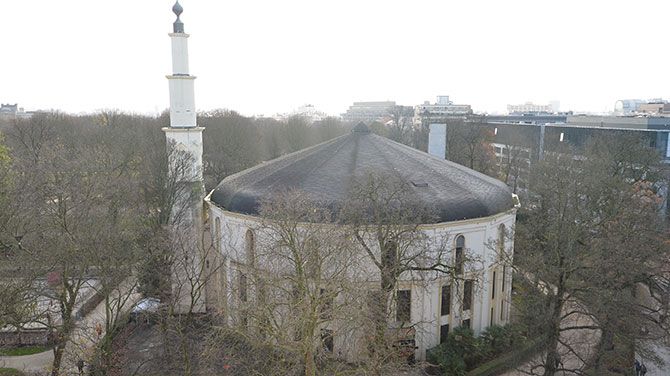
Saudi Arabia, in an indication that it is serious about shaving off the sharp edges of its Sunni Muslim ultra-.....

The United States has been and remains the staunchest supporter of Israel, and its unqualified support will ca.....

Prominent US constitutional lawyer and scholar Alan M. Dershowitz raised eyebrows when he described Qatar as &.....
.jpg)
The geopolitical developments in the Middle East over the past fifteen years have created new politi.....

I was in Israel when Trump made his announcement recognizing Jerusalem as Israel’s capital. In.....
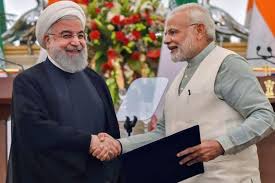
Iran is back in the news and for all the wrong reasons. It has been the unnecessary third wheel in I.....

During the close to a century of its existence, the Hashemite Kingdom of Jordan has been, as former President .....
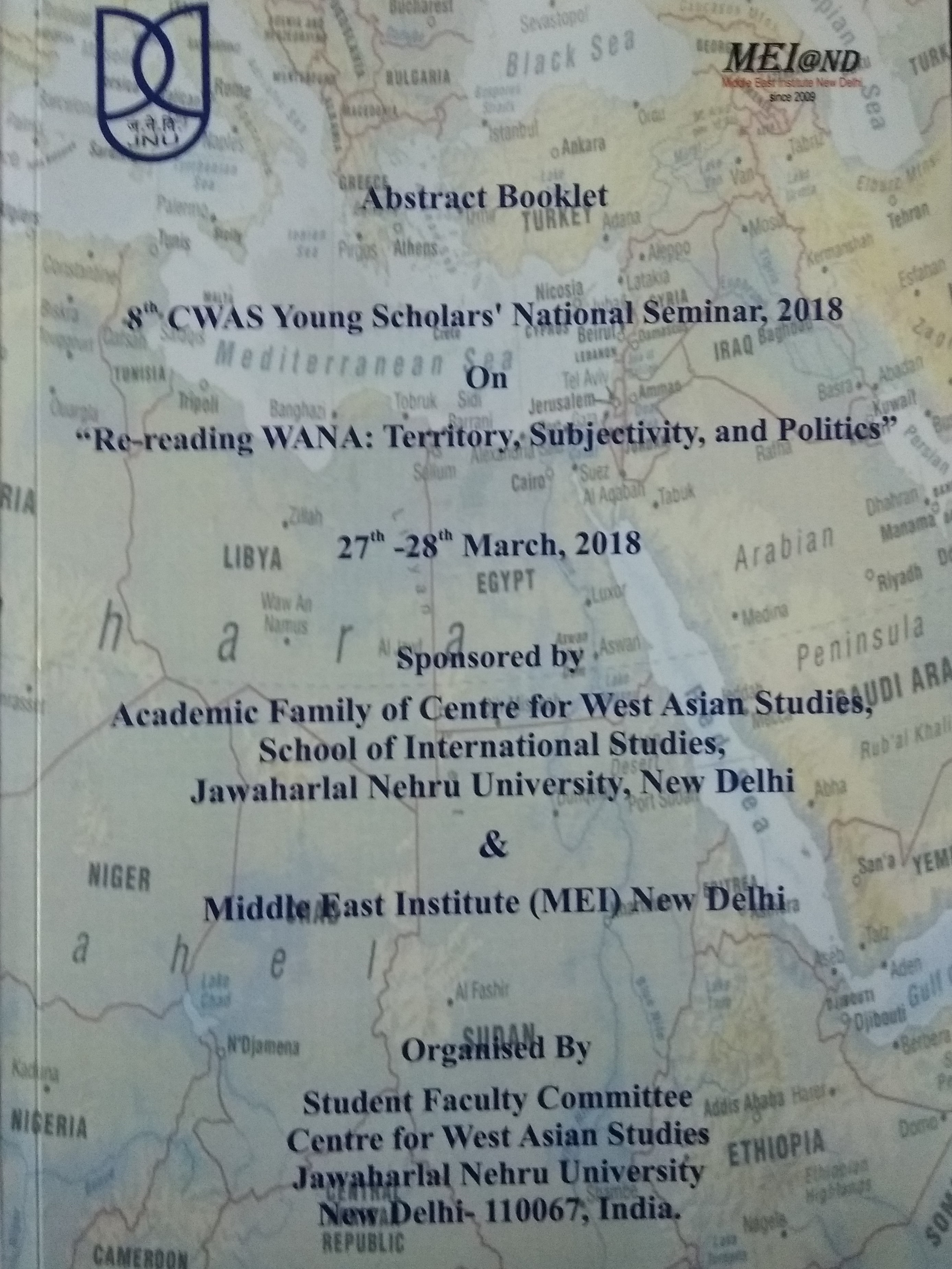
The Student and Faculty Committee (SFC) of the Centre for West Asian Studies, School of International Studies,.....

In the closely scrutinised India-Israel relationship, there is little in the public domain that remains unknow.....

You know what, it will go to the dustbin’ my articulate friend was blunt, brutal but hone.....

Balfour Declaration, A Century Later If one were to make a list of the most influential texts in .....



Election Schedule, July 2018 Country Election Forthcoming Ele.....

Kurdish Referendum, September 2017 Note: On 25 September 2017, the .....

18th Turkish Parliamentary Elections, October 1991[*] Political Parties Perc.....



Gulshan Dietl, India and the Global Game of Gas Pipelines, (New York and London, Routledge, 2017), P.....

Book review of Squaring the circle: Mahatma Gandhi and the Jewish Homeland. By Professor P. R. Kumaraswam.....

SQUARING THE CIRCLE: MAHATMA GANDHI AND THE JEWISH NATIONAL HOME Author: P R Kumaraswamy Knowledge World.....

B orn in Poland on 2 August 1923, Szymon Persk who later Hebraised his name as Shimon Peres was the leader of the pr.....

I. George W. Bush and Israel II. From the Inauguration to 9/11 III. From 9/11 to June 2002 .....
